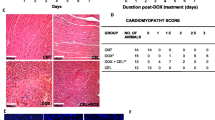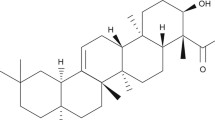Abstract
Heat shock proteins (HSPs) are the best-known endogenous factors that protect against cell injury under various pathological conditions and that can be induced by various physical, chemical, and biological stressors. New research seeks to discover a compound that is clinically safe and can induce the accumulation of HSPs in patients. This paper reports that the oral administration of three doses of bicyclol, a novel antihepatitis drug, induced hepatic HSP27 and HSP70 expression in a time- and dose-dependent manner, and that bicyclol treatment stimulated heat shock factor 1 (HSF1) activation in mice. The inducing effects of bicyclol on HSP27, HSP70 and HSF1 were all blocked by quercetin, an inhibitor of HSP biosynthesis. The cytoprotective effect of HSP27/70 induced by bicyclol against hepatotoxicity of acetaminophen (AP) was assessed in mice. The prior administration of bicyclol markedly suppressed AP-induced liver injury as indicated by the reduction in the elevation of serum alanine aminotransferase and aspartate aminotransferase, in liver necrosis, in the release of cytochrome c and apoptosis-inducing factor from mitochondria, as well as in hepatic deoxyribonucleic acid fragmentation in mice. However, all the above actions of bicyclol against AP-induced mouse liver injuries were significantly attenuated by quercetin. This is the first report to show that bicyclol induces hepatic HSP27/70 expression via activation of HSF1 and that the cytoprotective action of bicyclol against liver injury is mediated by its induction of HSP27/70. These results provide new evidence for elucidating the mechanism of the hepatoprotective action of bicyclol in animals and patients.







Similar content being viewed by others
Abbreviations
- HSPs:
-
heat shock proteins
- ALT:
-
alanine aminotransferase
- AST:
-
aspartate aminotransferase
- AP:
-
acetaminophen
- PEG-400:
-
polyethylene glycol 400
- RT-PCR:
-
reverse transcription-polymerase chain reaction
- dNTP:
-
deoxy-ribonucleoside triphosphate
- TBE:
-
Tris-borate buffer
- SDS-PAGE:
-
sodium dodecyl sulfate polyacrylamide gel electropheresis
- PVDF:
-
polyvinylidene difluoride
- HSF1:
-
heat shock factor-1
- AIF:
-
apoptosis-inducing factor
- EMSA:
-
electrophoretic mobility shift assay
- HSE:
-
heat shock element
- mRNA:
-
messenger ribonucleic acid
References
Baek SH, Min JN, Park EM, Han MY, Lee YS, Lee YJ, Park YM (2000) Role of small heat shock protein HSP25 in radioresistance and glutathione redox cycle. J Cell Physiol 183:100–107
Beck SC, De Maio A (1994) Stabilization of protein synthesis in thermotolerant cells during heat shock. Association of heat shock protein-72 with ribosomal subunits of polysomes. J Biol Chem 269:21803–21811
Bukau B, Horwich AL (1998) The Hsp70 and Hsp60 chaperone machines. Cell 92:351–366
Goossens V, Grooten J, De Vos K, Fiers W (1995) Direct evidence for tumor necrosis factor-induced mitochondrial reactive oxygen intermediates and their involvement in cytotoxicity. Proc Natl Acad Sci USA 92:8115–8119
Hahm KB, Park IS, Kim YS, Kim JH, Cho SW, Lee SI, Youn JK (1997) Role of rebamipide on induction of heat-shock proteins and protection against reactive oxygen metabolite-mediated cell damage in cultured gastric mucosal cells. Free Radic Biol Med 22:711–716
Han SI, Oh SY, Woo SH, Kim KH, Kim JH, Kim HD, Kang HS (2001) Implication of a small GTPase Rac1 in the activation of c-Jun N-terminal kinase and heat shock factor in response to heat shock. J Biol Chem 276:1889–1895
Helmbrecht K, Zeise E, Rensing L (2000) Chaperones in cell cycle regulation and mitogenic signal transduction: a review. Cell Prolif 33:341–365
Hirakawa T, Rokutan K, Nikawa T, Kishi K (1996) Geranylgeranylacetone induces heat shock proteins in cultured guinea pig gastric mucosal cells and rat gastric mucosa. Gastroenterology 111:345–357
Hosokawa N, Hirayoshi K, Nakai A et al (1990) Flavonoids inhibit the expression of heat shock proteins. Cell Struct Funct 15:393–401
Jakubowicz-Gil J, Rzymowska J, Paduch R, Gawron A (2002) The effect of quercetin on the expression of heat shock proteins and apoptosis induction in monkey kidney cell line GMK. Folia Histochem Cytobiol 40:137–138
Knowlton AA (1995) The role of heat shock proteins in the heart. J Mol Cell Cardiol 27:121–131
Kregel KC (2002) heat shock proteins: modifying factors in physiological stress responses and acquired thermotolerance. J App Physiol 92:2177–2186
Kuboki S, Schuster R, Blanchard J, Pritts TA, Wong HR, Lentsch AB (2007) Role of heat shock protein 70 in hepatic ischemia–reperfusion injury in mice. Am J Physiol Gastrointest Liver Physiol 292:G1141–1149
Kultz D (2005) Molecular and evolutionary basis of the cellular stress response. Annu Rev Physiol 67:225–257
Latchman DS (2003) Protective effect of heat shock proteins: potential for gene therapy. Gene Ther Mol Biol 7:245–254
Li Y, Dai GW, Li Y, Liu GT (2001) Effect of bicyclol on acetaminophen-induced hepatotoxicity: energetic metabolism and mitochondrial injury in acetaminophen-intoxicated mice. Yao Xue Xue Bao 36:723–726
Liu GT (2001) The anti-virus and hepatoprotective effect of bicyclol and its mechanism of action. Chin J New Drugs 10:325–327
Liu GT, Li Y, Wei HL, Zhang H, Xu JY, Yu LH (2005) Mechanism of protective action of bicyclol against CCl-induced liver injury in mice. Liver Int 25:872–879
Masuda Y, Sumita S, Fujimura N, Namiki A (2003) Geranylgeranylacetone attenuates septic diaphragm dysfunction by induction of heat shock protein 70. Crit Care Med 31:2585–2591
Matsuo K, Togo S, Sekido H et al (2005) Pharmacologic preconditioning effects: prostaglandin E1 induces heat-shock proteins immediately after ischemia/reperfusion of the mouse liver. J Gastrointest Surg 9:758–768
Morris SD, Cumming DVE, Latchman DS, Yellon DM (1996) Specific induction of the 70-kD heat stress proteins by the tyrosine kinase inhibitor herbimycin-A protects rat neonatal cardiomyocytes. A new pharmacological route to stress protein expression? J Clin Investig 97:706–712
Nagayama S, Jono H, Suzaki H et al (2001) Carbenoxolone, a new inducer of heat shock protein 70. Life Sci 69:2867–2873
Nishida T, Matsura T, Nakada J et al (2006) Geranylgeranylacetone protects against acetaminophen-induced hepatotoxicity by inducing heat shock protein 70. Toxicology 219:187–196
Perisic O, Xiao H, Lis JT (1989) Stable binding of Drosophila heat shock factor to head-to head and tail-to tail repeats of a conserved 5bp recognition unit. Cell 59:767–806
Santoro MG (2000) Heat shock factors and the control of the stress response. Biochem Pharmacol 59:55–63
Sreedhar AS, Csermely P (2004) Heat shock proteins in the regulation of apoptosis: new strategies in tumor therapy: a comprehensive review. Pharmaco Ther 101:227–257
Sumioka I, Matsura T, Kai M, Yamada K (2004) Potential roles of hepatic heat shock protein 25 and 70i in protection of mice against acetaminophen-induced liver injury. Life Sci 74:2551–2561
Vigh L, Literati PN, Horvath I, Torok Z, Balogh G, Glatz A, Kovacs E, Boros I et al (1997) Bimoclomol: a nontoxic, hydroxylamine derivative with stress protein-inducing activity and cytoprotective effects. Nat Med 3:1150–1154
Yao GB, Ji YY, Wang QH, Zhou XQ, Xu DZ, Chen XY, Zhang QB (2002) A randomized double-blind controlled trial of bicyclol in treatment of chronic hepatitis B. Chin J New Drugs Clin Rem 21:457–462
Zhao DM, Liu GT (2001) Protective effect of bicyclol on concanavalin A induced liver nuclei DNA injury in mice. Natl Med J China 81:844–848
Acknowledgements
This work was supported by grants from the Chinese Ministry of Science and Technology (96-901-01-45) and from the Chinese Medical Board in New York (93-582).
Author information
Authors and Affiliations
Corresponding author
Rights and permissions
About this article
Cite this article
Bao, X.Q., Liu, G.T. Bicyclol: a novel antihepatitis drug with hepatic heat shock protein 27/70-inducing activity and cytoprotective effects in mice. Cell Stress and Chaperones 13, 347–355 (2008). https://doi.org/10.1007/s12192-008-0034-4
Received:
Revised:
Accepted:
Published:
Issue Date:
DOI: https://doi.org/10.1007/s12192-008-0034-4




